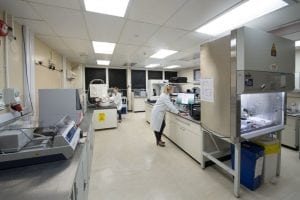ESA Establishes Laboratory for 3-D Printing and Advanced Manufacturing
[Via Satellite 07-20-2016] The European Space Agency (ESA) has opened a new technical laboratory in the U.K. to further understanding on the capabilities of 3-D printing and other advanced manufacturing techniques for future space missions. Located at the Science and Technology Facilities Council’s Rutherford Appleton Laboratory (RAL) in Harwell, Oxfordshire, directly adjacent to ESA’s U.K. facility, the Advanced Manufacturing Laboratory has access to other facilities and expertise available on the Harwell Campus to assess new material processes, joining techniques and 3-D printing technologies.
Additive manufacturing, or 3-D printing, involves building up parts layer-by-layer rather than machining away from bulk material. The print material is typically a powder or wire feedstock that is melted using a laser or electron beam source. The lab has access to a metal-based 3-D printer and is equipped with a suite of high power microscopes, an X-ray Computed Tomography (CT) machine and a range of furnaces. Additionally, the facility performs mechanical testing such as tensile and micro-hardness testing. Harwell will be looking at aspects such as the physical process parameters, the impact of powder feedstock and the design procedures used in order to assess the effect of 3-D printing techniques upon the quality of manufactured parts.
“There’s a multitude of emerging technologies with apparent potential for producing stronger, lighter and cheaper spacecraft structures, but we have to be sure they are fully suitable for space with no show-stoppers,” said ESA’s Andrew Barnes, who oversees the new laboratory. “Our laboratory aims to assess candidate materials and manufacturing processes for space missions, pre-screening them early in their development cycle. The results obtained will help guide ESA and the wider space industry in deciding where to focus future technology investments.”
